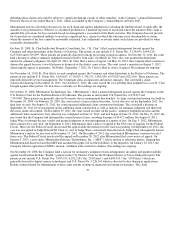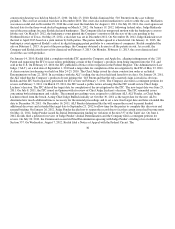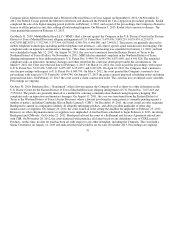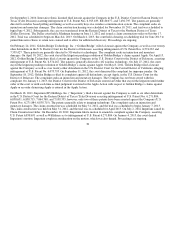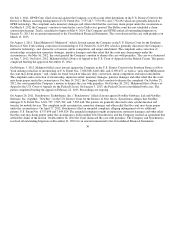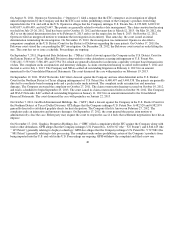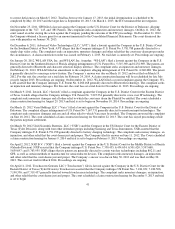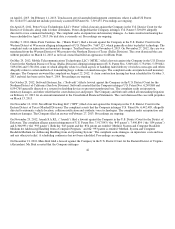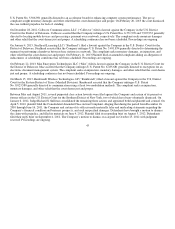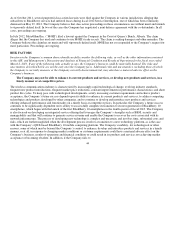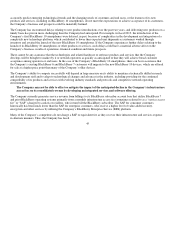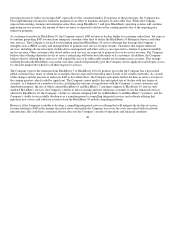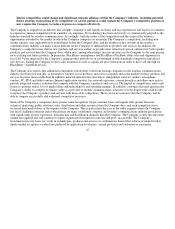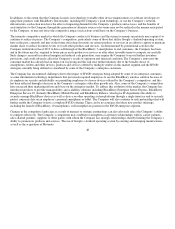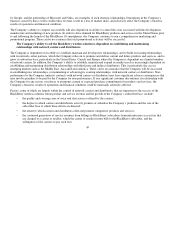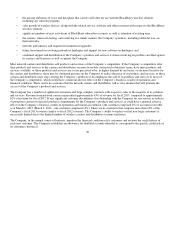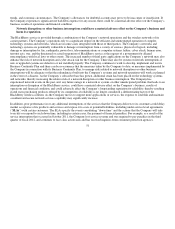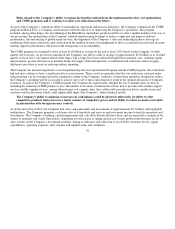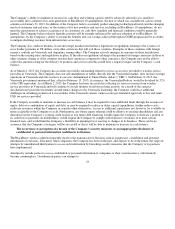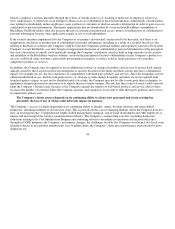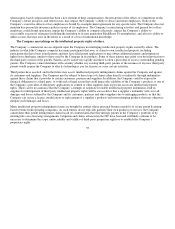Blackberry 2013 Annual Report Download - page 52
Download and view the complete annual report
Please find page 52 of the 2013 Blackberry annual report below. You can navigate through the pages in the report by either clicking on the pages listed below, or by using the keyword search tool below to find specific information within the annual report.
accurately predict emerging technological trends and the changing needs of customers and end users, or the features of its new
products and services, including its BlackBerry 10 smartphones, do not meet the expectations or achieve acceptance of its customers,
the Company’s business and prospects could be materially harmed.
The Company has encountered delays relating to new product introductions over the past two years, and delivering new products on a
timely basis has proven more challenging than the Company had anticipated. For example, in fiscal 2013, the introduction of the
Company’s first BlackBerry 10 smartphones were delayed, in part, because of complexities in the development and integration of a
completely new technology platform, which contributed to lower than expected unit shipments as customers worked through
inventory and awaited the launch of the new BlackBerry 10 smartphones. If the Company experiences further delays relating to the
launch of its BlackBerry 10 smartphones or other products or services, such delays could have a material adverse affect on the
Company’s business, results of operations, financial condition and future prospects.
There cannot be any assurance that the technologies and related hardware or software products and services that the Company
develops will be brought to market by it or network operators as quickly as anticipated or that they will achieve broad customer
acceptance among operators or end users. In the case of the Company’s BlackBerry 10 smartphones, there can be no assurance that
the Company’s existing BlackBerry 6 and BlackBerry 7 customers will migrate to the new BlackBerry 10 devices, which are offered
for sale at a higher price point than many of the Company’s older devices.
The Company’s ability to compete successfully will depend in large measure on its ability to maintain a technically skilled research
and development staff and to adapt to technological changes and advances in the industry, including providing for the continued
compatibility of its products and services with evolving industry standards and protocols and competitive network operating
environments.
The Company may not be able to offset or mitigate the impact of the anticipated decline in the Company’s infrastructure
access fees on its consolidated revenue by developing an integrated services and software offering.
The Company currently generates service revenue from billings to its BlackBerry subscriber account base that utilize BlackBerry 7
and prior BlackBerry operating systems primarily from a monthly infrastructure access fee (sometimes referred to as a “service access
fee” or “SAF”) charged to carriers or resellers, who in turn bill the BlackBerry subscriber. The SAF for consumer customers
historically has been much lower than the SAF for enterprise customers, who receive a higher level of value-added security,
encryption and other services by utilizing the Company’s BlackBerry Enterprise Service (BES) platform.
Many of the Company’s competitors do not charge a SAF or equivalent fee as they recover their infrastructure and services expense
in alternate manners. Thus, the Company has faced
45


